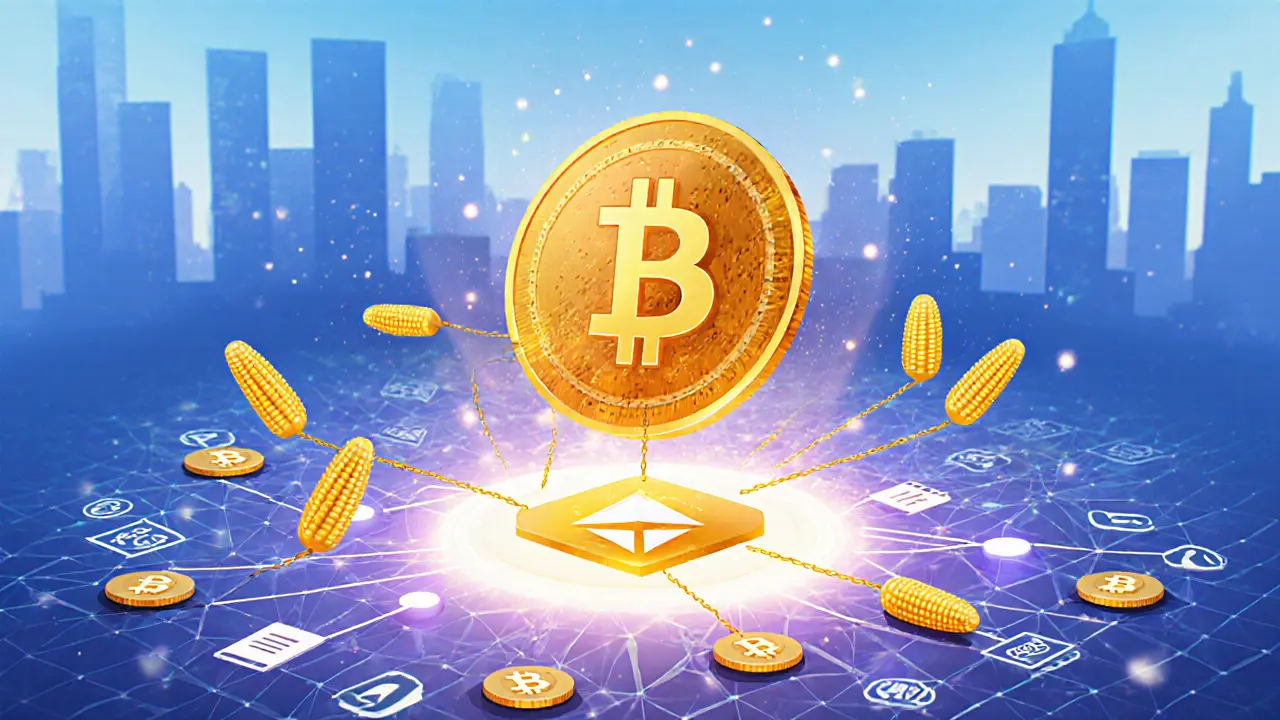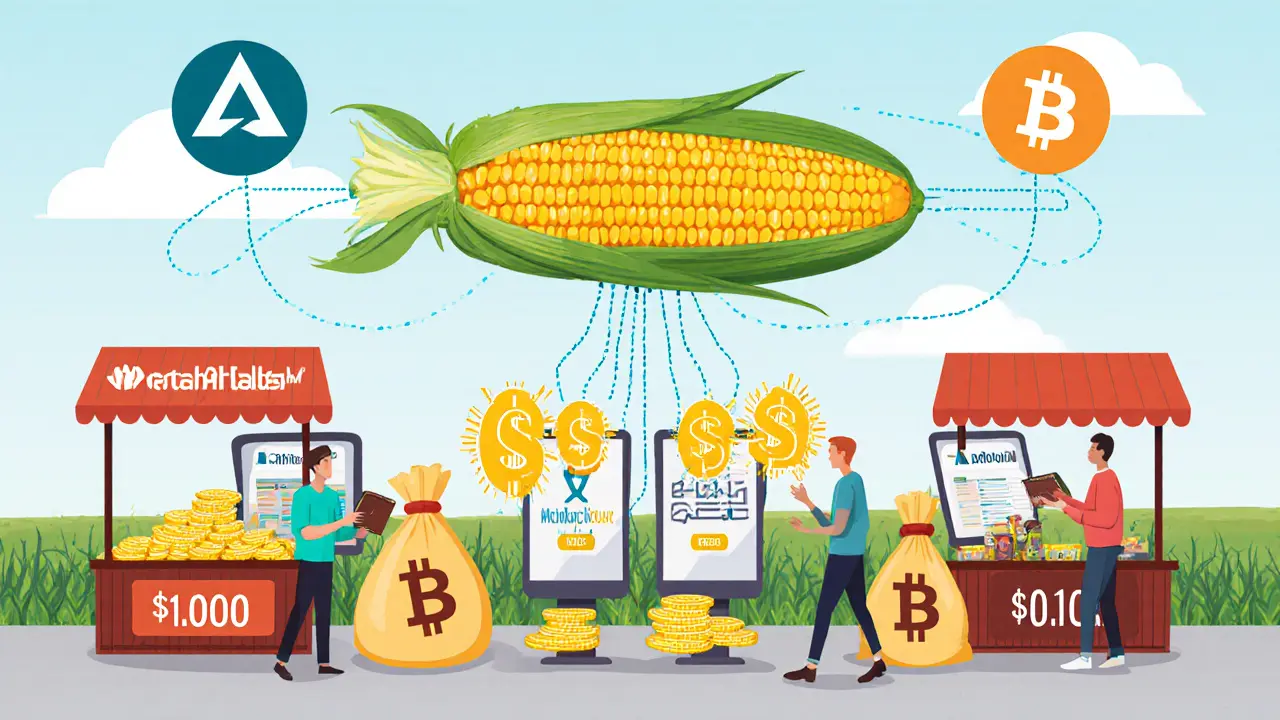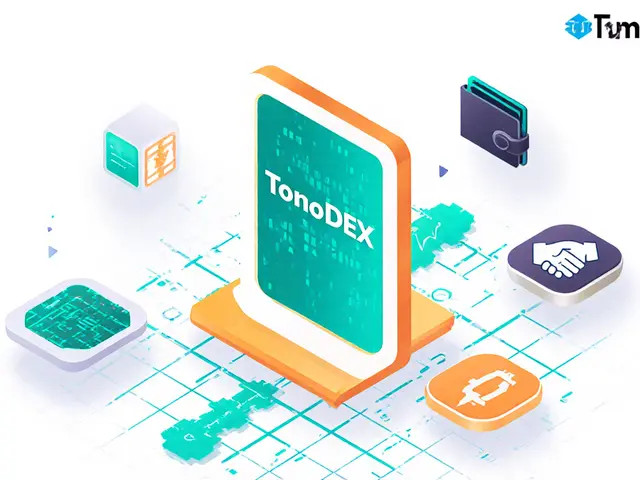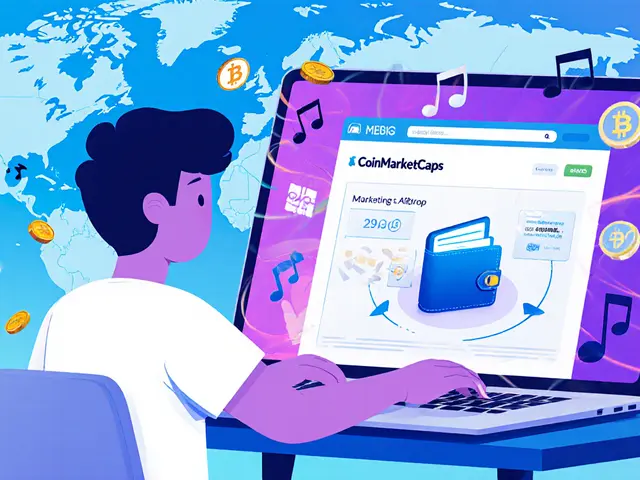XMS (Mars Ecosystem) Airdrop Details, Eligibility & Token Outlook
Explore the XMS airdrop history, token mechanics, price data, and future outlook for Mars Ecosystem's governance token in a concise, easy‑to‑read guide.
Read More

Estimate potential returns for your investment in CORN token based on different market scenarios. Note: This is a simulation tool and not financial advice.
Investing in CORN is high risk. The token hasn't launched yet (scheduled for February 3, 2025). The estimated value assumes successful project adoption. Actual returns could be significantly higher or lower. Only invest what you can afford to lose.
Most people know Bitcoin as digital gold-something you hold, not something you use. But what if Bitcoin could power DeFi apps, earn yield, and pay for transactions without leaving its network? That’s the idea behind Corn (CORN), a new Layer 2 blockchain built to make Bitcoin useful in Ethereum’s world.
0x44f49ff0da2498bcb1d3dc7c0f999578f67fd8c6. It’s not live yet. The public token sale is scheduled for February 3, 2025. Until then, users interact with the network through "Kernels," which are points earned by depositing assets and using the platform. These Kernels will convert into $CORN tokens once the mainnet launch completes.


The tech is real. The funding is strong. The team knows what they’re doing. Now, it’s about building the apps-and getting Bitcoin holders to join.
Corn isn’t a typical investment. The $CORN token hasn’t launched yet. If you’re considering it, you’re betting on its ecosystem growing over the next two years. It’s high-risk because it depends on Bitcoin adoption in DeFi-which is still early. Only invest what you can afford to lose, and treat it like a long-term project, not a short-term trade.
You can’t buy $CORN yet. The public sale is scheduled for February 3, 2025. Until then, you can earn "Kernels" by depositing assets and using Corn Network’s apps. These Kernels will convert into $CORN tokens after the token generation event. Keep an eye on the official Corn Network website and Discord for updates.
Yes. Corn Network is EVM-compatible, so you can connect MetaMask, Trust Wallet, or any other Ethereum wallet. Just add the Corn RPC endpoint to your wallet, and you’re ready to interact with the network. The official Corn Docs provide step-by-step instructions for this setup.
$BTCN is a Bitcoin-backed gas token used to pay for transactions on Corn Network. It’s pegged 1:1 to Bitcoin and can be swapped from wBTC or cbBTC. $CORN is the governance token that lets you vote on network decisions, earn rewards, and access special features. $BTCN is for utility; $CORN is for ownership and control.
Corn is designed to be decentralized. It runs on Arbitrum, which is a permissionless Layer 2. The $CORN token will be used for governance, meaning holders will vote on upgrades and fees. However, the project is still in early stages, and the team controls key infrastructure like the Bitcoin bridge. Full decentralization will take time and community adoption.
The official documentation is hosted at docs.usecorn.com. It includes wallet setup guides, bridge instructions, developer resources, and technical specs. The GitHub organization "usecorn" also hosts the open-source code for the network’s core contracts and tools. Always verify you’re on the official site-scammers often copy project names.
Stacks uses its own blockchain and Proof-of-Transfer consensus to connect Bitcoin to smart contracts. Corn uses Ethereum’s Arbitrum Layer 2 and Bitcoin restaking via Babylonchain. Corn is faster and cheaper because it rides on Ethereum’s infrastructure. Stacks has a larger ecosystem and longer track record. Corn is newer but more integrated with existing DeFi tools.
You can’t stake Bitcoin directly. Instead, you use Bitcoin restaking via Babylonchain, which locks your BTC on the Bitcoin blockchain and uses its security to back Corn’s network. You don’t move your BTC. You just let Corn use its security in exchange for rewards-usually in $CORN tokens after the token launch.
The total supply of $CORN is 2.1 billion tokens. Of that, 116.25 million (5.54%) will be available in the public sale on February 3, 2025. The rest is allocated to the team, investors, ecosystem growth, and community rewards over time.
Corn Network operates in a gray area. The SEC hasn’t classified $CORN as a security or utility token. Its design as a governance token with access to network fees may help it qualify as a utility token under the SEC’s "safe harbor" proposal. But regulatory clarity is still uncertain, and users should assume risks could change based on future decisions by U.S. or global regulators.

Explore the XMS airdrop history, token mechanics, price data, and future outlook for Mars Ecosystem's governance token in a concise, easy‑to‑read guide.
Read More
A deep TomoDEX review covering its launch, features, liquidity, user experience, current status, and safer alternatives for traders in 2025.
Read More
A deep dive into the Mind Music (MND) global awareness airdrop: token distribution, staking rewards, exchange listing, music impact, and sustainability concerns.
Read More
Write a comment